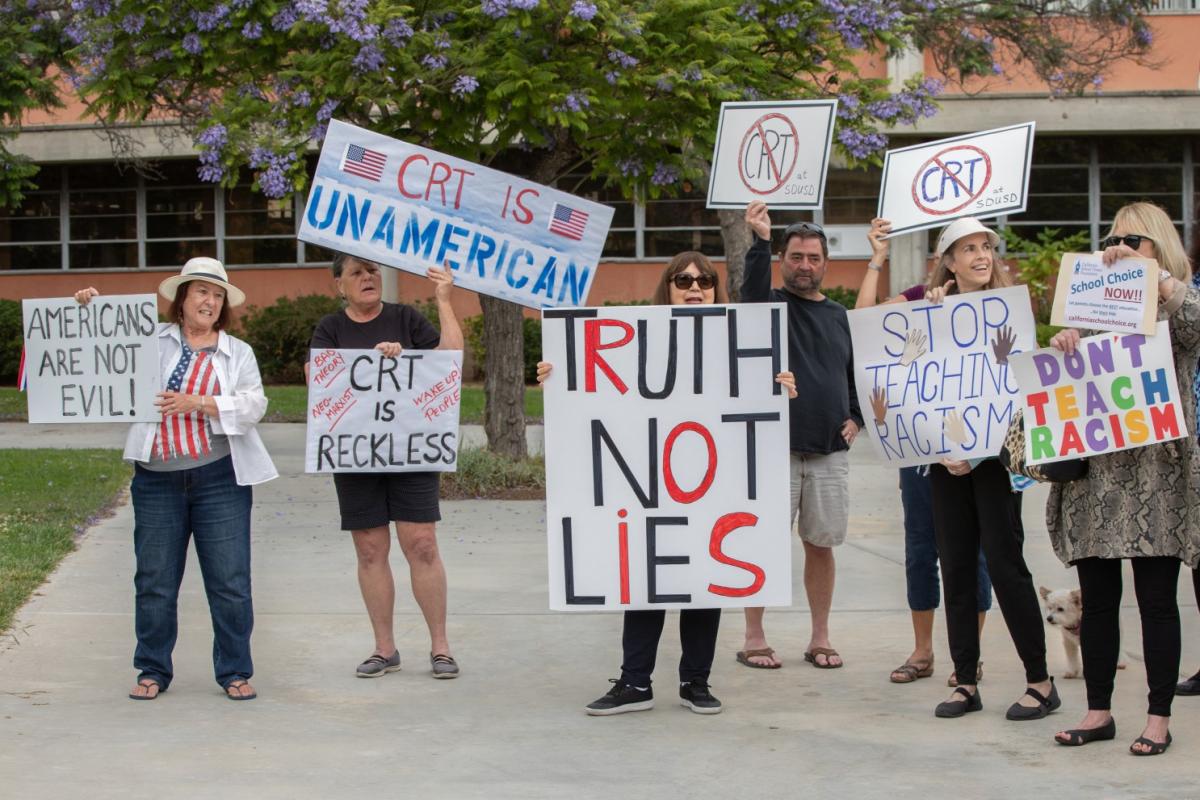 It’s generally much easier to spot the fallacy and irrationality in others than to be truly aware of our own. While most of us will confess to such imperfections in theory, we rarely accept specific examples when pointed out to us about ourselves.
It’s generally much easier to spot the fallacy and irrationality in others than to be truly aware of our own. While most of us will confess to such imperfections in theory, we rarely accept specific examples when pointed out to us about ourselves.
Recognizing them in the culture around us is a start, however. It’s part of that whole “critical thinking” stuff we like to talk about so often in education (often without having a clear idea what, exactly, we mean). It’s not enough to point and yell “GASLIGHTING!” whenever you’re pretty sure someone’s full of it. Intellectual honestly – not to mention our own internal clarity and peace of mind – requires breaking down just what it is we think is happening.
It also means being open to others pointing out flaws in our assertions and analysis. Personally, I hate that part.
With that in mind, there’s a line of rationalization that’s been bugging me for a long time. It’s been difficult, however, to put it into words – which is usually a sign I’m not entirely clear on what’s going on, either with the irrational assertions themselves or with my reactions to them. The pattern suddenly clicked for me this morning, however, and I’d like to share in hopes maybe you’ve noticed some version of this yourself.
“Me” is me in the oversimplified dialogue below. “CA” is any conservative acquaintance I have who feels compelled to set me straight on things. CA may not have right-wing gaslighting intent. They’re a caricaturization I’m using to make a point and convey an experience. No need getting your red, white, and blue panties in a wad. I don’t have anyone in particular in mind – just the ideologies and mindsets currently making me crazy.
Me: I’m greatly troubled by this terrible thing conservatives are doing right now. It violates several foundational principles of our nation and who we claim to be.
CA: You’re overreacting. Your emotional response suggests they’re doing this horrible thing at a level of 8 or 9, when in reality, they’re only doing it at a 3 or 4 and telling their followers it’s an 8 or 9.
Me: So it’s their supporters who are horrible people? For wanting them to do these terrible things more effectively?
CA: No, Muttonhead. most of their minions don’t support terrible things. They only go along with them because they think what the other side is going to do is far worse. You’re demonizing conservative voters by acting like they support what their representatives claim to do in their name.
Me: So, which is it? Are conservative voters corrupt for demanding (or at least going along with) these terrible things or are conservative leaders corrupt for doing them even though their voters would prefer another way?
CA: Neither. The leaders have to do what their constituents want, so they can’t be blamed. The voters have to choose between the options given to them, so they’re not responsible. The real problem is you and the way you keep trying to assign blame and motives which aren’t there.
Me: I… I’m just not OK with this. The fact is, these really bad things are happening and too many conservatives are pretending they’re OK.
CA: You just don’t understand history. Both sides do these sorts of horrible things. They always have. Here are some examples from over the years of things I consider ethically and politically equivalent to what you’re complaining about now. You shouldn’t get so worked up about what’s happening now because it’s just how things are and forever have been. It’s how power and politics have always worked in the U.S.
Me: So you’re saying that despite our lofty ideals, in reality we’ve always been a nation of horrible things? We’re fundamentally like this and always have been?
CA: Oh my god, you and your Critical Race Theory, anti-American revisionist nonsense! America is the greatest country in the history of the world! Any minor flaws we may have had were resolved long ago. Can you not focus on the progress we’ve made? And look at our proclaimed ideals! Are you telling me they’re not superior to anything else mankind has come up with in the past several thousand years?
Me: But… those are the ideals I’m talking about. The ones we’re not living up to. We pride ourselves on reaching to become the people described in the Declaration of Independence, the “City on a Hill” sermon, and the Bill of Rights. That’s my whole point. When we tolerate (or support) the terrible things, we’re turning out backs on those ideals. We’re going backward.
CA: But we always have, so it doesn’t count. Besides, both sides do it exactly equally. Mathematically, that means they cancel one another out.
Me: So we’re really this bad? All of us? And always have been?
CA: Ridiculous. I can’t believe you work with young people when you have so much hostility towards the U.S.A. (*starts humming Lee Greenwood*)
Me: I feel like we’re going in circles here…
CA: And we just get better and better! That’s why we have to mandate so much patriotism and American Exceptionalism in our schools and sporting events, so people will spontaneously feel it!
Me: But we’re not getting closer to fulfilling them. We’re violating them for selfish, horrible reasons.
CA: Just like always. It never changes, so calm down. That’s why it’s not a big deal.
Me: Yeah, we’re definitely going in circles now.
CA: Just like we always have, so it’s OK! Both sides do!
Me: But I have to support the idea that we’re doing great?
CA: WHY DO YOU HATE AMERICA? This is why we need more vouchers. On all sides!
Me: *brain explodes*
So, help me out. What am I missing here? Am I being unfair, or have you experienced this as well? I particularly welcome conservative responses as long as you play nice. Even if the other way is how we’ve always done it and both sides are just as bad.

 Like many people, I’ve been trying my hand at freelancing here and there for extra income over the past few years. In my case, it’s nothing glorious – just writing (or rewriting) web content explaining the benefits of regular eye exams, how a reverse mortgage works, or where Eddie Murphy’s net worth ranks him compared to other actors or comics. (He’s doing better than Mike Myers or Denzel Washington but not as well as Rowan Atkinson or Robert Downey, Jr.)
Like many people, I’ve been trying my hand at freelancing here and there for extra income over the past few years. In my case, it’s nothing glorious – just writing (or rewriting) web content explaining the benefits of regular eye exams, how a reverse mortgage works, or where Eddie Murphy’s net worth ranks him compared to other actors or comics. (He’s doing better than Mike Myers or Denzel Washington but not as well as Rowan Atkinson or Robert Downey, Jr.) The content was difficult, to be sure. I had so little to build on (no pun intended) in terms of background knowledge or relevant experiences that the waves of new information had nothing to grab on to – no schema or framework on which to cling. I didn’t understand half of the vocabulary, let alone the concepts, priorities, or science involved. It was humbling.
The content was difficult, to be sure. I had so little to build on (no pun intended) in terms of background knowledge or relevant experiences that the waves of new information had nothing to grab on to – no schema or framework on which to cling. I didn’t understand half of the vocabulary, let alone the concepts, priorities, or science involved. It was humbling. I did my first draft in Microsoft Word like I always do. It’s silly, but I have specific fonts and margins that feel right to me and help me think more clearly. My preferred approach is to just get it all down on paper (well, virtual paper) then go back and clean it up afterward. I’m usually well over maximum word count with my first drafts, but I’ve accepted this as my own personal style – which is a nice way to say it’s a glaring flaw I’ve simply learned to work through each and every time.
I did my first draft in Microsoft Word like I always do. It’s silly, but I have specific fonts and margins that feel right to me and help me think more clearly. My preferred approach is to just get it all down on paper (well, virtual paper) then go back and clean it up afterward. I’m usually well over maximum word count with my first drafts, but I’ve accepted this as my own personal style – which is a nice way to say it’s a glaring flaw I’ve simply learned to work through each and every time. Please understand, my Eleven Faithful Followers – this story isn’t about the app. It’s not about whether or not the writing was as bad as it looked or the reading level of the target audience for this particular company. I’m a grown-up (well, most of the time). I was hired to do a job a certain way and if I can’t do it the way they want, I don’t deserve to get paid. My opinions about rhetorical choices are irrelevant in this situation.
Please understand, my Eleven Faithful Followers – this story isn’t about the app. It’s not about whether or not the writing was as bad as it looked or the reading level of the target audience for this particular company. I’m a grown-up (well, most of the time). I was hired to do a job a certain way and if I can’t do it the way they want, I don’t deserve to get paid. My opinions about rhetorical choices are irrelevant in this situation. Like many of you, I’ve learned over the years to let it out without doing anything too destructive and then come back and deal with whatever set me off. That’s the advantage of age and a little wisdom. It’s not about avoiding every possible failure; it’s about how we recover and respond, yada yada growth mindset, mutter mumble faster smarter wiser, blah blah blah cue Captain Marvel soundtrack.
Like many of you, I’ve learned over the years to let it out without doing anything too destructive and then come back and deal with whatever set me off. That’s the advantage of age and a little wisdom. It’s not about avoiding every possible failure; it’s about how we recover and respond, yada yada growth mindset, mutter mumble faster smarter wiser, blah blah blah cue Captain Marvel soundtrack. At the risk of sounding preachy about something I’m certain we all already know, let’s remember this coming year to be intentional and aware when it comes to standards and expectations and how we convey them. Don’t sacrifice your belief that students can and should do better just because it’s been a weird couple of years. Academics matter. Progress matters. Sometimes pushing them is for their own good. Sometimes they need to fail (short-term) to grow.
At the risk of sounding preachy about something I’m certain we all already know, let’s remember this coming year to be intentional and aware when it comes to standards and expectations and how we convey them. Don’t sacrifice your belief that students can and should do better just because it’s been a weird couple of years. Academics matter. Progress matters. Sometimes pushing them is for their own good. Sometimes they need to fail (short-term) to grow. As I continue growing much older and a tiny bit wiser, I keep returning to an idea that’s been nipping at my risk-averse consciousness for some time.
As I continue growing much older and a tiny bit wiser, I keep returning to an idea that’s been nipping at my risk-averse consciousness for some time. I’m old and have seen much over the years, both directly and through the eyes of the literally thousands of other teachers with whom I’ve worked. I’ve been through official teacher mentor / coaching training in several iterations despite the eventual decision by the folks paying for all that training deciding not to invest in long-term formal implementation. Perhaps most significantly, I’ve mentored / coached teachers in person for years and years and years – sometimes even for that small stipend I mentioned.
I’m old and have seen much over the years, both directly and through the eyes of the literally thousands of other teachers with whom I’ve worked. I’ve been through official teacher mentor / coaching training in several iterations despite the eventual decision by the folks paying for all that training deciding not to invest in long-term formal implementation. Perhaps most significantly, I’ve mentored / coached teachers in person for years and years and years – sometimes even for that small stipend I mentioned. 
 If you think you might be interested, we can get a bit more technical about mutual expectations and the logistical stuff. There are different schools of thought on what constitutes effective “coaching” and how it’s distinct from “mentoring” and why neither should be conflated with “counseling,” etc. Experience suggests it’s worth making sure we’re on the same general page before anyone says “I DO.” That’s best done not-on-the-blog.
If you think you might be interested, we can get a bit more technical about mutual expectations and the logistical stuff. There are different schools of thought on what constitutes effective “coaching” and how it’s distinct from “mentoring” and why neither should be conflated with “counseling,” etc. Experience suggests it’s worth making sure we’re on the same general page before anyone says “I DO.” That’s best done not-on-the-blog. 
 That’s it. Pretty straightforward. If you’re not interested, feel free to pass this along to someone who might be. If you’re feeling that nervous little tingly feeling like maybe you should absolutely do this but you’re worried about, I dunno… whatever you’re worried about, take a breath. Shoot me that email. You’re not committing to anything. Let’s talk (or email) and see if those initial interactions make you feel better or worse – and go from there.
That’s it. Pretty straightforward. If you’re not interested, feel free to pass this along to someone who might be. If you’re feeling that nervous little tingly feeling like maybe you should absolutely do this but you’re worried about, I dunno… whatever you’re worried about, take a breath. Shoot me that email. You’re not committing to anything. Let’s talk (or email) and see if those initial interactions make you feel better or worse – and go from there.